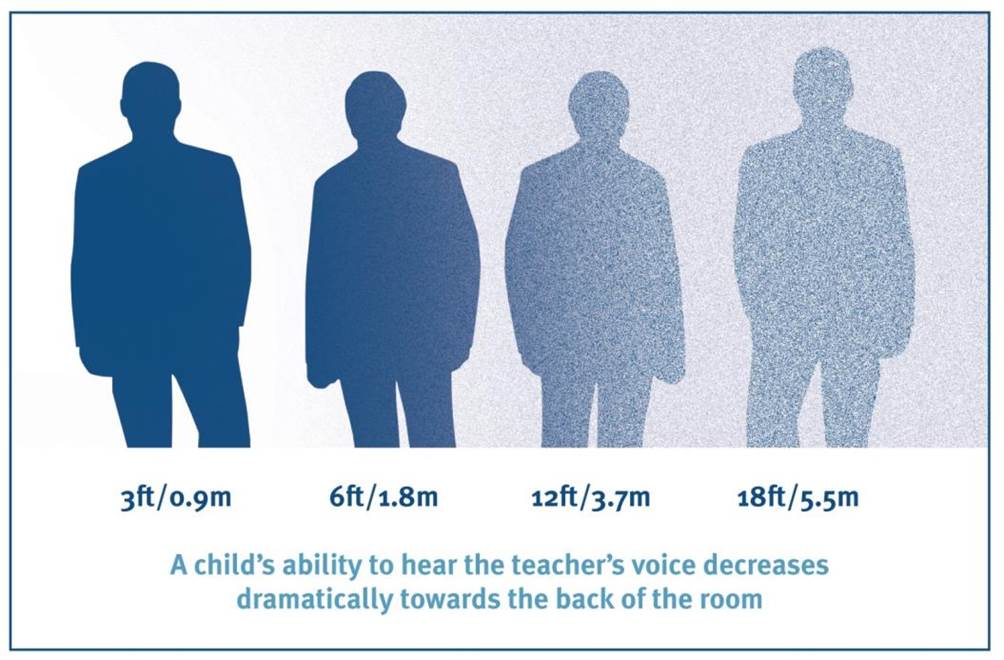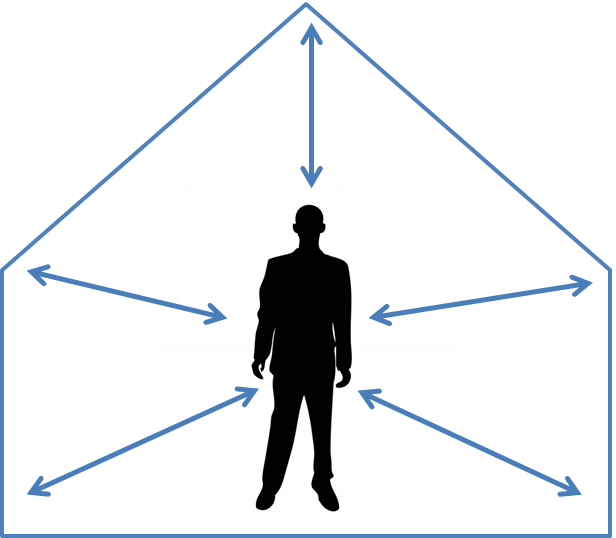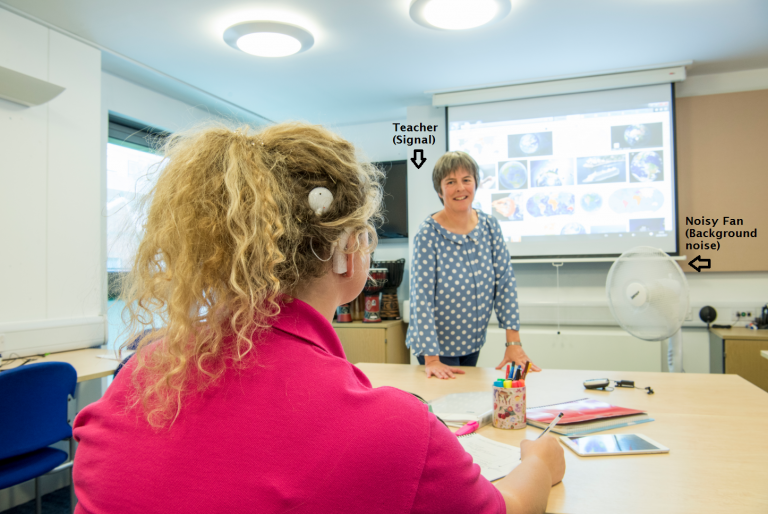There are three main factors which can affect the sound quality in any room or classroom.
Click on each tab to learn more.
The cochlear implant microphone works optimally at a distance of 1 to 2 metres from the sound source. The further away the listener is, the worse the quality and intensity of the signal becomes.

This is the term given to what we think of as ‘echoey sound’. It can have a significant impact on speech intelligibility; it significantly affects the clarity of what someone is saying. The shorter the reverberation time the better the clarity of sound.

Rooms such as classrooms have many hard surfaces, tall ceilings, wooden floors etc. Sounds reverberate (bounce off) around the room for longer before they can be absorbed. The longer the sounds reverberate around a room, the more degraded the sound quality in the room becomes. This clip shows 4 examples: from an acoustically treated classroom to one with no treatment. Which one would you rather be listening in?
Background noise is any unwanted sounds that interfere with what a listener wants or needs to hear/understand. Background noise is measured relative to the loudness of the sound the listener is trying to hear. This is termed the Signal to Noise Ratio (SNR).

For example:
Speaker is 65 dB
Noise is 55 dB
65 – 55 = 10
Speaker (Signal) is 10 dB louder than the background noise (Noise)
The Signal to Noise Ratio (SNR) is +10 dB
A person with a cochlear implant will therefore need extra help in order to hear in noise. Just think how many additional noise sources there are in the classroom other than the teacher’s voice. While a classroom might sound fine to an adult, it may be a challenge for a child with a cochlear implant because they do not have the ability to fill in the gaps with existing language knowledge. They will therefore need extra support in order to hear in noise.
For adults to make sense of speech in noise they need to have the speaker’s voice (Signal) 6 dB louder than the background noise. This is a Signal to Noise (S/N) ratio of + 6dB.
A child needs a + 16 dB Signal to Noise ratio and a hearing impaired child needs a +20 to +30 dB Signal to Noise ratio.
A typical classroom without adaptation is likely to have a signal to noise ratio between +5 and -7 dB.
Data is taken from the 2008 NDCS acoustics toolkit (attached the relevant section).
Key concepts
- What are optimal conditions for listening with a cochlear implant?
- What are the challenges of listening with an implant?
- What are the main factors which can affect the sound quality in a room or classroom?
- What can we do to help attending and listening?
